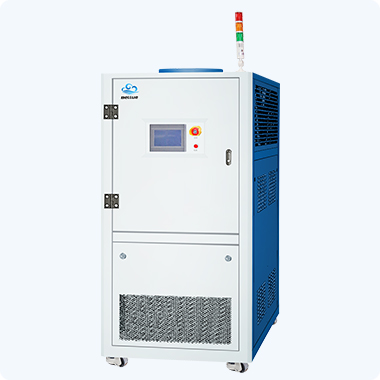How does the refrigeration system of the test equipment such as the storage cabinet temperature control unit run
How does the refrigeration system of test equipment such as storage cabinet temperature control unit operate inside? Today, let's go into the world of refrigeration systems and uncover the secrets of its four key components.
The first is the compressor, which is known as the "heart" of the refrigeration system. Its role can not be underestimated, it is it for the entire refrigeration cycle to provide a steady stream of power. In the refrigeration process, the compressor is responsible for extracting the steam in the evaporator in time, and compressing these lower pressure vapors into higher pressure vapors. In this way, the volume of the vapor is reduced and the pressure is increased, which is ready for subsequent feeding into the condenser. It is through this cycle process of compression → condensation (heat release)→ expansion → evaporation (heat absorption) that the refrigeration system can continue to operate.
The next thing to introduce is the condenser, which is actually a heat exchange equipment, which can also be called a heat exchanger. In the refrigeration cycle, the condenser uses the cooling medium of the external environment, such as air, water or ethylene glycol, to take away the heat of the high temperature and high pressure refrigeration vapor sent by the compressor. In this way, the high temperature and high pressure refrigerant vapor can be cooled and condensed into a high pressure and normal temperature refrigerant liquid. It is worth noting that in this process, the pressure of the refrigeration system remains unchanged, still in a high pressure state.

The buck throttling device is like a precision faucet, which can not only throttle and reduce pressure, but also adjust the flow rate. After the high-pressure normal temperature refrigerant liquid from the condenser passes through it, it becomes a low temperature and low pressure refrigerant, and then it is sent into the evaporator to absorb heat and evaporate.
The evaporator, which is also a heat exchange equipment, can also be called a heat exchanger. In the refrigeration cycle, the low temperature and low pressure refrigerant liquid after being treated by the buck throttling device enters the evaporator and evaporates into vapor. In this process, the refrigerant will absorb the heat of the surrounding environment, so that the ambient temperature will drop, so as to achieve the purpose of cooling and dehumidifying the air. The lower the evaporation temperature of the refrigerant in the evaporator, the lower the temperature of cooling the surrounding material.
A single stage steam compression refrigeration system is composed of these four key components. They are connected in turn by pipes to form a closed system. In this system, the refrigerant constantly circulates, changes phase state, and exchanges heat with the outside world. In addition, the refrigeration system has indoor fans, humidifiers, reheaters, outdoor fans, plate heat exchangers, dryer filters, filters, liquid mirrors and other auxiliary components. It is in the joint efforts of these components that the refrigeration system can create a good test environment for test equipment such as energy storage cabinet temperature control units.
Energy storage liquid cooling temperature control technology application advantages
How to derive the test results of high and low temperature coolant tester
High and low temperature coolant test electrical source circuit connection method
The problem of water source during the use of high and low temperature coolant testing machine
Coolant filling and discharging method of battery module high and low temperature liquid cooling test machine
High and low temperature liquid cooling test machine solutions
